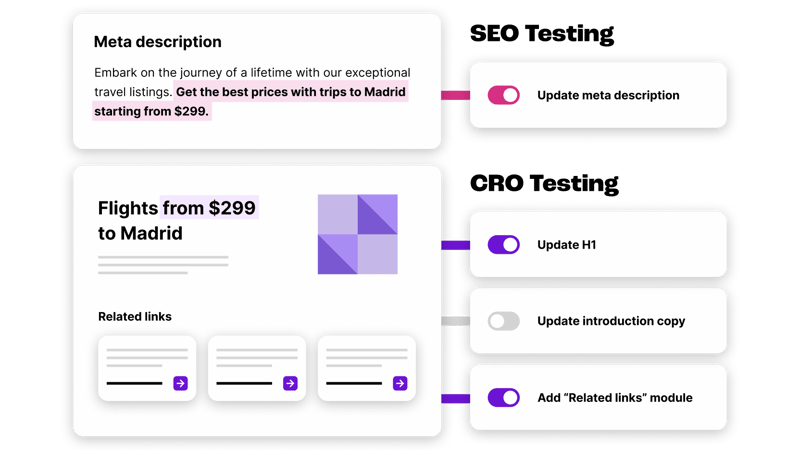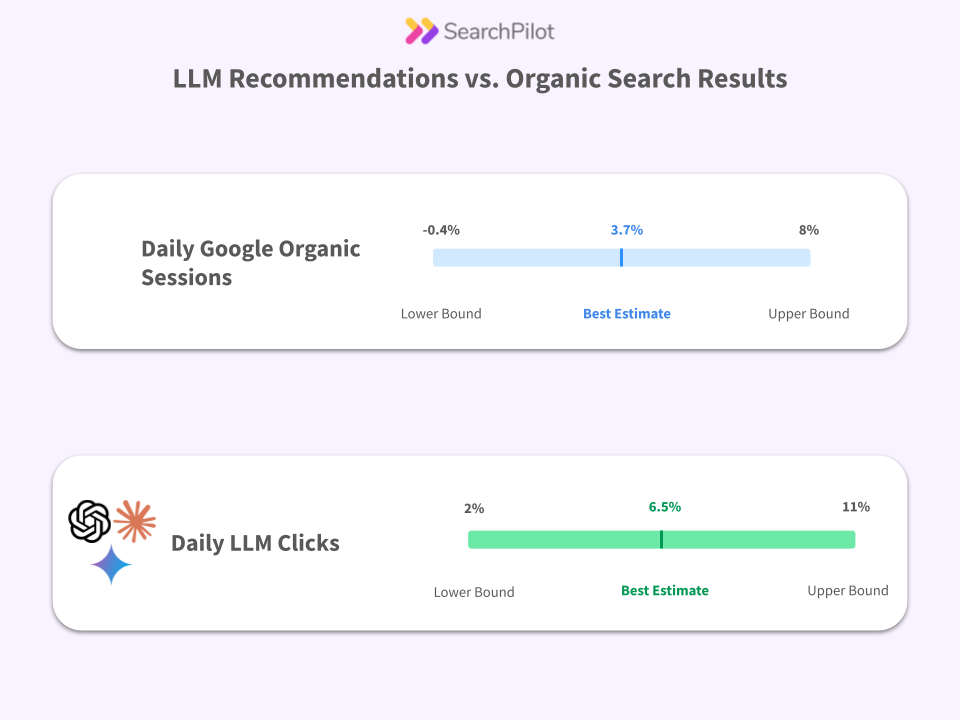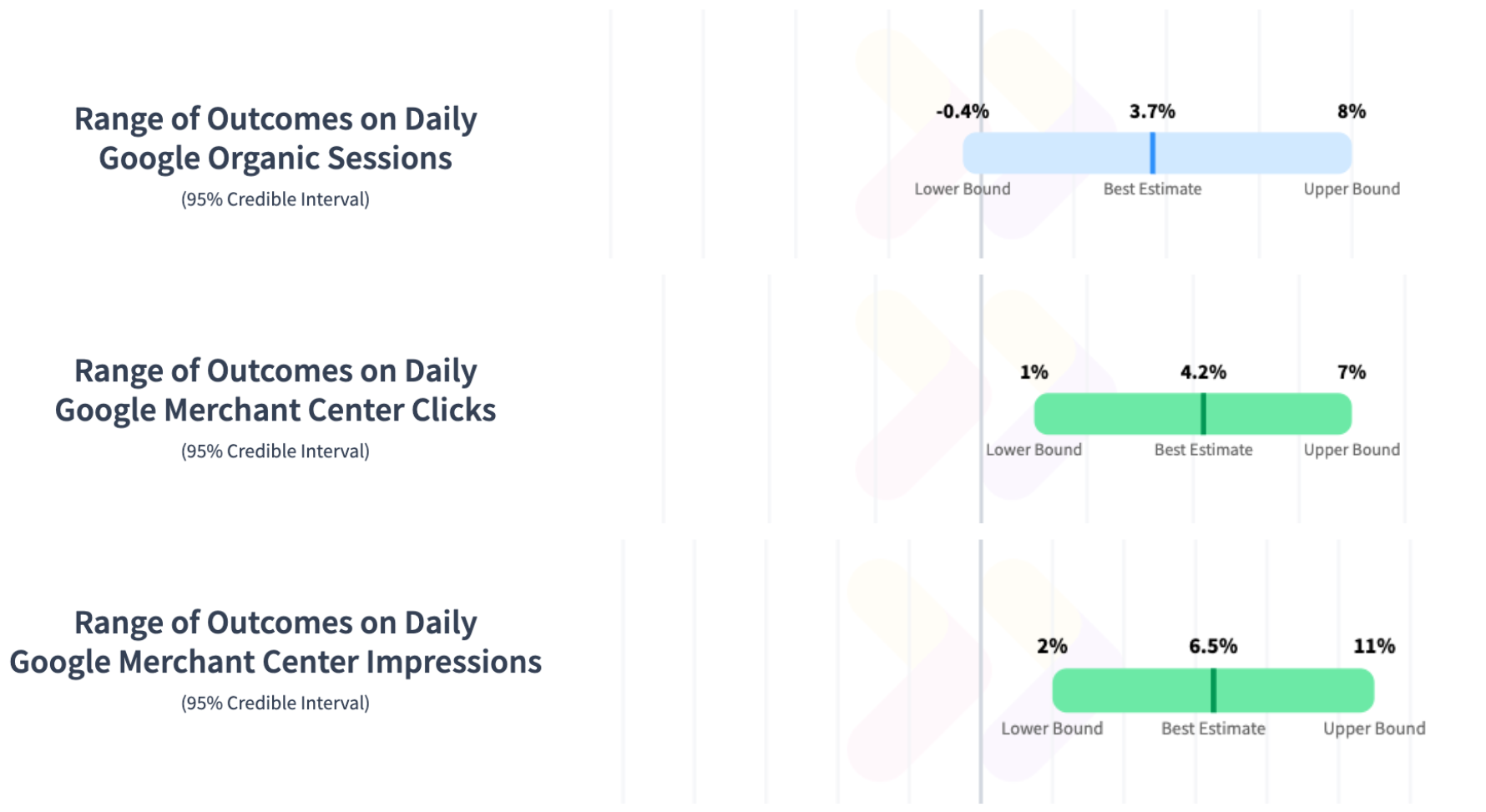Check out the original full-length video.
SEO and CRO testing are two sides of the same coin. While the former works to drive organic web traffic, the latter works to convert that traffic into sales opportunities. Think of these two programs as dance partners in a digital ballroom – they must move together and rely on strong coordination and collaboration to score a perfect ten.
At SearchPilot, we often hear the question: ‘we’re running CRO experiments or have an existing experimentation program, but how do we run SEO tests in tandem?’
To answer that, we first say it’s not only possible, but preferable. Second, all it takes is coordination. So, in this blog post, we’ll explore the value of performing CRO testing alongside SEO tests and why the two programs are inseparable.
The key underlying principle is coordination
Undoubtedly, strong coordination is the keystone to SEO and CRO success. For example, SEO and product teams must have a clear line of sight on each other’s projects. Without this, it becomes easy for, say, a product team to delete or change an element on a specific page that the SEO team has been working on enhancing or vice versa.
Quite simply, the teams that directly influence website changes must work closely with one another. There is even a growing trend where SEO teams actually sit within product teams rather than with marketing. Doing this allows SEO and product to coordinate tests and website changes, ultimately preventing each team from stepping on the other’s toes.
CRO testing and SEO: splitting users vs splitting pages
When it comes to CRO and SEO tests, the critical thing to realize is that a CRO test splits your audience, so it splits your users into control and variant groups. In contrast, an SEO test is about splitting pages for all users (which includes Googlebot).
Much like dance partners, both are independent from one another. And because they’re independent tests with independent hypotheses, they can run simultaneously. To operationalize these tests, though, it requires a clear answer to these two fundamental questions:
- Which pages are we looking to test on?
- What are the hypotheses?
If we have these answers for both our SEO and CRO tests, we can identify whether our tests are running on the same pages or if there’s an overlapping hypothesis. For example, if the product team is about to test the removal of web copy from a product listing page, the SEO team can’t simultaneously test and improve that copy.
But how exactly do we achieve this level of experimentation maturity?
Flowcharts, RACI, and a simple tagging framework
At SearchPilot, we encourage our customers to run all SEO and CRO tests (whatever platform they are building them on) through a dedicated flowchart. It’s this process that helps coordinate who needs to know what information, and when, so each team can plan accordingly.
This involves a simple red, amber, and green tagging framework:
- Red tests: For red tests, a team can only run a test after another test has completed. For example, if you’re testing web copy improvements on a product listing page, the other team can’t test the impact of removing that text altogether at the same time.
- Amber tests: With amber tests, you run two tests simultaneously, but the hypotheses are independent. So, the SEO team might test to improve the main header on a page, while the product team looks to include more confidence copy near the call to action on the same page. Doing this simultaneously requires each team to QA their tests to ensure compatibility.
- Green tests: For green tests, tests are entirely independent from one another, and different teams are testing different sections of the website. These tests might not even directly impact users. For example, the SEO team might be testing structured data. You’ll still need to QA these tests, but they don’t relate to any tests the product team might be running.
Once your tests are categorized against this framework, you can use RACI – which stands for responsible, accountable, consulted, and informed – to determine each stakeholder’s input level on testing. For example, does the product team need to be consulted before an SEO test is run? Or do they just need to be informed that this test is happening? Agreeing the rules in advance ensures everyone feels comfortable that they will hear what they need to hear, when they need to hear it.
Effective SEO and CRO testing is about more than ‘running tests’
At SearchPilot, we’re known for providing SEO testing capabilities and software. But to achieve our mission of helping prove the value of SEO for the world's biggest websites, we must also help our customers build effective experimentation programs rather than simply run good individual tests.
By taking a red, amber, and green approach to testing and deploying a RACI framework, we are helping teams move away from a culture of passive information sharing and towards a culture of joint effort and active coordination that helps everyone score that perfect ten.
To learn more about how SearchPilot is helping improve the maturity of SEO and CRO testing, you can sign up for a demo today.



